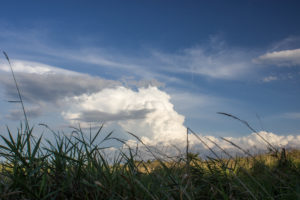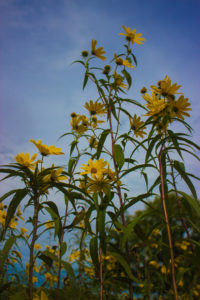Nature’s Abundance

Clouds at Belgum Grove
Scarcity and abundance define so much in our lives. Modern capitalism and modern society are based on scarcity—the idea that the best, most important, and most desirable resources and consumer products are scarce, difficult to obtain, and thus expensive. Abundance—which underlies the approach of hunter-gatherer societies up to contemporary thinkers on sustainability—tells us the world is overflowing with all we need . . . that is, if we define “what we need,” even “wealth,” as what the world provides without over-exploitation or harmful extraction.
One of the most important essays in my life is Paul Gruchow’s “What the Prairie Teaches Us.” I carry its message with me every time I visit, think about, or write about the prairie: what is the prairie teaching me? And the prairie has so much to teach about abundance. Gruchow doesn’t use the word “abundance,” but he does tell us that “there are thousands of species of living things on the prairie,” that “it is lovely . . . in a hundred thousand ways and in a million details,” and indeed that “the prairie grows richer as it ages.” Self-renewal is the quintessence of abundance.

Abundance at Strub Prairie
It’s not difficult to see that the prairie is a self-sustaining ecosystem, which it provides abundantly for itself. Numbers tell that story. The original 150 to 250 million acres of tallgrass prairie—the once-largest ecosystem in what is now the United States—boasted at least 500 different plant species (including 70 grasses), 150 to 250 bird species, over 30 reptile and amphibian species, over 30 mammals, 1500 insect species, and countless microorganisms.
But the abundance of the prairie is not merely a numbers game. A prairie in full bloom astonishes me. I might encounter a hundred different plants across just a few acres on a prairie hike. But the tallgrass’s abundance I see and feel lies more in the exuberance of its collective beauty and spirit. Our human lives may often seem rich and bountiful, but the artificial constructs of “civilization” pale against an explosion of blazing star, prairie sunflower, columbine, bluestem, and grama, accompanied by a sighing wind and a warbling meadowlark.
The prairie created and supported itself in this incredible bounty for thousands of years. As human hands attempt to restore what has been destroyed, abundance joyfully erupts once again. One of the fundamental questions of living sustainably on this earth is “What is enough?” As the spring wildflowers begin to bloom and the grasses start to burst from the ground, now is a marvelous time to remind ourselves of nature’s abundance on the prairie. As I visit Bur Oak Land Trust’s Belgum Grove, Turkey Creek Nature Preserve, or Strub Prairie and gaze out onto the proverbial sea of grass dotted with yellow, purple, and red wildflowers, prairie tells me—teaches me—“This is enough. What more could you possibly want of this world?”


